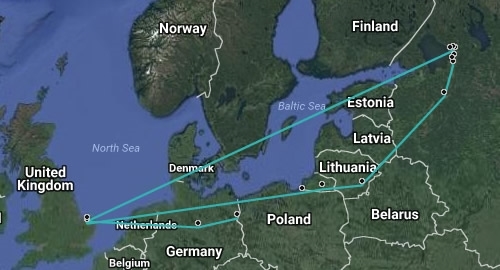By Chris Heward, Wetlands Research Assistant
Our satellite-tagged woodcock, Sir John, has left the UK in the last couple of days. After spending the entire winter in North Norfolk, the recent spring-like weather seems to have inspired Sir John to start his 2,400 km migration.

Last Thursday, I saw a brimstone butterfly drifting across the lawn. Yesterday, I heard a chiffchaff singing, the first of the year. The riverbank at GWCT HQ is a sea of yellow daffodils. Whilst I hate to run the risk of jinxing it, it does look as though spring is here.
This is a busy time of year for our woodcock. I’ve already read a few reports of roding woodcock being seen. Our resident birds can start roding as early as February in the south of England, but generally mid-March onwards is normal. Like other birds, woodcock probably take cues from a range of seasonal indicators, such as day length, but it’s hard to imagine the recent spell of very spring-like weather hasn’t also played a part.
And if our resident woodcock are feeling ready to breed, our migrant visitors are probably feeling similar urges. Unlike the residents, however, a migration of several thousand miles stands between them and their breeding grounds. With night skies currently clear and the prevailing wind approaching from the west, it seems likely that many overwintering migrants will consider this an ideal time to get going.
Sir John apparently did. He was tagged in Norfolk in 2016 and has been one of the few birds to keep in regular touch throughout the winter. He returned to the site at which we tagged him and has remained there since early December.
In the last week though, he has left the UK, and is currently on the German-Polish border not far from Berlin. If he’s planning on making the same spring migration as last year, and generally most birds do, he’s roughly a third of the way to Lake Ladoga, near St. Petersburg.